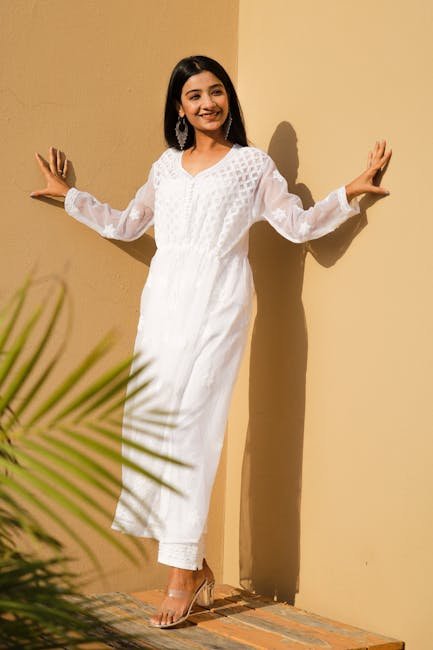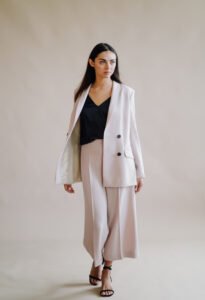Chikankari kurtis are a symbol of grace, tradition, and timeless fashion. Originating from the royal courts of Lucknow, this exquisite embroidery art has transcended centuries to become a beloved choice for women who appreciate delicate craftsmanship and effortless elegance.
In this comprehensive guide, we’ll explore:
- The history and origin of Chikankari
- Why Chikankari kurtis are a wardrobe essential
- Different types of Chikankari stitches and patterns
- How to style Chikankari kurtis for various occasions
- Buying tips to ensure authenticity
- Care and maintenance for longevity
- FAQs about Chikankari kurtis

Whether you’re a fashion enthusiast or someone looking to invest in a handcrafted masterpiece, this blog will help you appreciate the beauty of Chikankari kurtis.
1. The Rich History of Chikankari
Chikankari, derived from the Persian word Chikan (meaning embroidery), is believed to have been introduced in India by Noor Jahan, the wife of Mughal Emperor Jahangir. This art flourished under the patronage of the Nawabs of Awadh in Lucknow, where skilled artisans perfected the craft.
Key Highlights:
- 17th Century: Chikankari gained royal patronage.
- 19th Century: British influence led to commercialization.
- Modern Era: Chikankari is a Geographical Indication (GI) tagged craft, ensuring authenticity.
Today, Chikankari is not just an embroidery style but a cultural heritage that continues to charm fashion lovers worldwide.
2. Why Chikankari Kurtis Are a Wardrobe Essential
A. Timeless Appeal
Unlike fast fashion, Chikankari kurtis never go out of style. Their delicate patterns make them perfect for both casual and formal wear.
B. Breathable & Comfortable
Made from lightweight fabrics like cotton, muslin, and chiffon, Chikankari kurtis are ideal for summer wear.
C. Versatile Styling
- Casual Look: Pair with jeans or palazzos.
- Office Wear: Team up with a formal skirt or trousers.
- Festive Occasion: Style with a lehenga or sharara.
D. Ethical Fashion Choice
Supporting Chikankari means supporting handmade, sustainable fashion and the artisans behind it.
3. Types of Chikankari Stitches & Patterns
Chikankari involves over 40 different stitches, each adding a unique texture. Here are the most popular ones:
| Stitch Type | Description |
|---|---|
| Bakhiya | Shadow work on the reverse side |
| Phanda | Small knots resembling millet grains |
| Murri | Tiny stitches forming rice-shaped patterns |
| Jaali | Net-like embroidery for a sheer effect |
| Hool | Detached eyelet stitch |
Each stitch requires precision, making every Chikankari kurti a handcrafted masterpiece.
4. How to Style Chikankari Kurtis for Every Occasion
A. Casual Day Out
- Kurti: Short, pastel-colored Chikankari
- Bottom: White jeans or jeggings
- Accessories: Juttis and a sling bag
B. Office Wear
- Kurti: Long, beige or grey Chikankari
- Bottom: Straight-fit trousers
- Accessories: Minimalistic earrings and a tote bag
C. Festive Look
- Kurti: Anarkali-style Chikankari
- Bottom: Flared palazzo or lehenga
- Accessories: Statement jewelry and mojris
D. Wedding Guest Outfit
- Kurti: Heavy Chikankari with zari work
- Dupatta: Organza or net dupatta
- Footwear: Embellished sandals
5. Buying Tips: How to Identify Authentic Chikankari
With machine-made replicas flooding the market, here’s how to spot real Chikankari:
✅ Check the Fabric: Original Chikankari is done on cotton, muslin, or silk.
✅ Look at the Backside: Handmade Chikankari has neat reverse stitches.
✅ Feel the Embroidery: Hand-stitched work has a slightly raised texture.
✅ Price: Authentic Chikankari is pricier due to labor-intensive work.
✅ GI Tag: Buy from Lucknow-based sellers for guaranteed authenticity.
6. Care & Maintenance of Chikankari Kurtis
To preserve the delicate embroidery:
✔ Washing: Hand wash in cold water with mild detergent.
✔ Drying: Lay flat in shade; avoid direct sunlight.
✔ Ironing: Use a low-heat iron; place a cloth over the embroidery.
✔ Storage: Fold gently; avoid hanging to prevent stretching.
7. Frequently Asked Questions (FAQs)
Q1. What makes Chikankari different from other embroideries?
Chikankari is hand-embroidered with fine thread work, often featuring shadow work (Bakhiya) and delicate patterns.
Q2. Can men wear Chikankari?
Yes! Chikankari kurta-pajamas are popular among men.
Q3. How long does it take to make one Chikankari kurti?
A simple design takes 3-5 days, while intricate pieces may take weeks.
Q4. Is Chikankari expensive?
Authentic hand-embroidered Chikankari is costlier than machine-made versions due to labor.
Q5. Which color Chikankari kurti is best?
- White & pastels for a classic look.
- Dark hues for a contemporary twist.
Q6. Can I wear Chikankari in winters?
Yes! Layer it with a jacket or shawl or opt for woolen Chikankari suits.
Conclusion
Chikankari kurtis are more than just clothing—they are a piece of art, history, and culture. Whether you’re dressing up for a festive occasion or keeping it casual, a Chikankari kurti adds sophistication to your look.
By choosing authentic Chikankari, you not only embrace timeless fashion but also support the artisans keeping this tradition alive.



